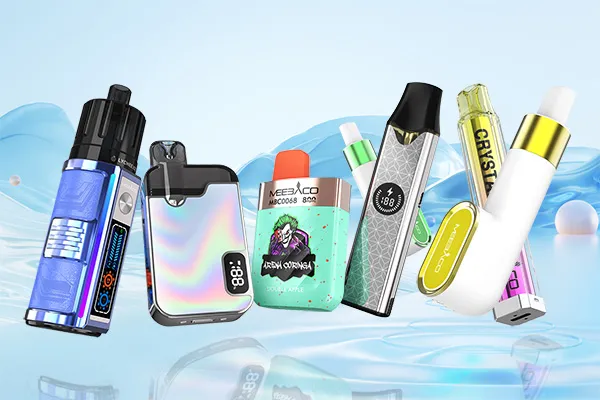You can master the latest information, new product , exhibition, promotion, etc
The e-cigarette industry has been grappling with a seismic shift in recent years, as regulatory bodies across the EU and US have implemented stringent restrictions on flavored e-cigarette pods—particularly those with fruit, mint, and candy-like profiles. Driven by concerns over youth initiation, these "fruit flavor bans" aim to curb underage usage, but they’ve also created significant challenges for manufacturers and retailers operating in these key markets. As the industry adapts to this new landscape, three strategic pillars have emerged as critical pathways to survival and growth: tobacco flavor replication, nicotine strength adjustment, and cross-industry collaboration.
The Regulatory Landscape: A Catalyst for Change
To understand the urgency of adaptation, it’s essential to contextualize the restrictions. In the EU, the revised Tobacco Products Directive (TPD) limits the sale of flavored e-liquids that appeal to minors, with member states like the UK and Germany enforcing strict bans on non-tobacco flavors. Across the Atlantic, the US Food and Drug Administration (FDA) has cracked down on fruit, mint, and menthol flavors in cartridge-based e-cigarettes, allowing only tobacco and menthol (in some cases) to remain on the market, pending further review.
These policies have disrupted revenue streams, as flavored products—long popular among adult users seeking alternatives to traditional cigarettes—face severe restrictions. For the industry, the path forward lies in reimagining product offerings to align with regulations while retaining adult consumers.
1. Tobacco Flavor Replication: Elevating the Classic Profile
One of the most promising strategies is the reimagination of tobacco flavors. Historically, tobacco-flavored e-liquids were often seen as a "default" option, lacking the complexity of their traditional counterparts. Today, manufacturers are investing in advanced extraction techniques and flavor science to create nuanced, authentic tobacco profiles that appeal to adult smokers.
For example, using cold-press extraction from premium tobacco leaves (such as Virginia, Burley, or Turkish varieties) preserves subtle aromatic compounds, mimicking the rich, earthy notes of combustible cigarettes. Blending techniques are also being refined: some brands now offer "heritage" blends that replicate the taste of vintage cigars or pipe tobaccos, catering to discerning adult users.
Consumer research plays a key role here. By surveying adult smokers on their preferred tobacco notes—whether it’s the sweetness of dried fruit in a Cuban blend or the peppery kick of a robusto—brands can tailor formulations to match specific preferences, turning tobacco flavor from a compliance necessity into a market differentiator.

2. Nicotine Strength Adjustment: Balancing Compliance and Satisfaction
Regulatory pressures extend beyond flavors; many regions, including the EU (via TPD) and Canada, have imposed strict limits on nicotine concentrations in e-liquids (often capped at 20mg/ml). In response, the industry is innovating around nicotine delivery systems to maximize satisfaction within these constraints.
Nicotine salts, a formulation that allows for smoother inhalation of higher nicotine levels without harshness, have become a cornerstone of this strategy. While total concentration remains compliant, nicotine salts enable more efficient absorption, providing a quicker, more satisfying hit—critical for adult smokers transitioning from traditional cigarettes.
Brands are also offering gradient strength options, allowing users to gradually adjust their intake. For instance, a range might include 10mg/ml, 15mg/ml, and 20mg/ml variants, catering to both light and heavy smokers. This flexibility not only complies with regional laws but also enhances user retention, as consumers can find a dosage that meets their needs.
Scientific collaboration is key here. Partnering with toxicologists and public health experts to study nicotine absorption rates ensures that products are both effective and safe, building trust with regulators and consumers alike.
3. Cross-Industry Collaboration: Expanding Horizons
In an era of strict regulation, cross-industry partnerships are unlocking new opportunities for innovation. By leveraging expertise from outside the e-cigarette sector, brands can develop products that comply with flavor restrictions while offering unique value.
Partnerships with Traditional Tobacco Companies: Collaborations with legacy tobacco firms provide access to decades of research on tobacco flavor chemistry and nicotine delivery. For example, a joint venture might combine a traditional brand’s proprietary tobacco blends with an e-cigarette manufacturer’s vapor technology, creating products that feel familiar to smokers.
Alliances with Food Science Experts: While fruit flavors are restricted, subtle botanical or spice notes (e.g., vanilla, cinnamon, or clove) may still be permissible in some regions. Partnering with food flavor houses—experts in creating complex, compliant taste profiles—can help develop tobacco blends enhanced with these notes, adding depth without appealing to minors.
Tech and Wellness Collaborations: Integrating smart technology (e.g., app-connected devices that track usage) or partnering with wellness brands to position e-cigarettes as part of a harm-reduction lifestyle can broaden market appeal. For instance, a collaboration with a fitness brand might emphasize reduced tar and carbon monoxide compared to traditional smoking, targeting health-conscious adults.
A Future of Compliance and Innovation
The "fruit flavor ban" has undoubtedly reshaped the e-cigarette industry, but it has also catalyzed a wave of innovation. By focusing on high-quality tobacco flavor replication, strategic nicotine adjustment, and cross-industry collaboration, brands can not only comply with regulations but also tap into new opportunities in the EU and US markets.
Success will hinge on a commitment to adult consumers—understanding their preferences, prioritizing safety, and communicating transparently about product benefits. As the industry evolves, those that balance compliance with creativity will emerge as leaders, proving that adaptation is not just a necessity but a pathway to long-term growth.









